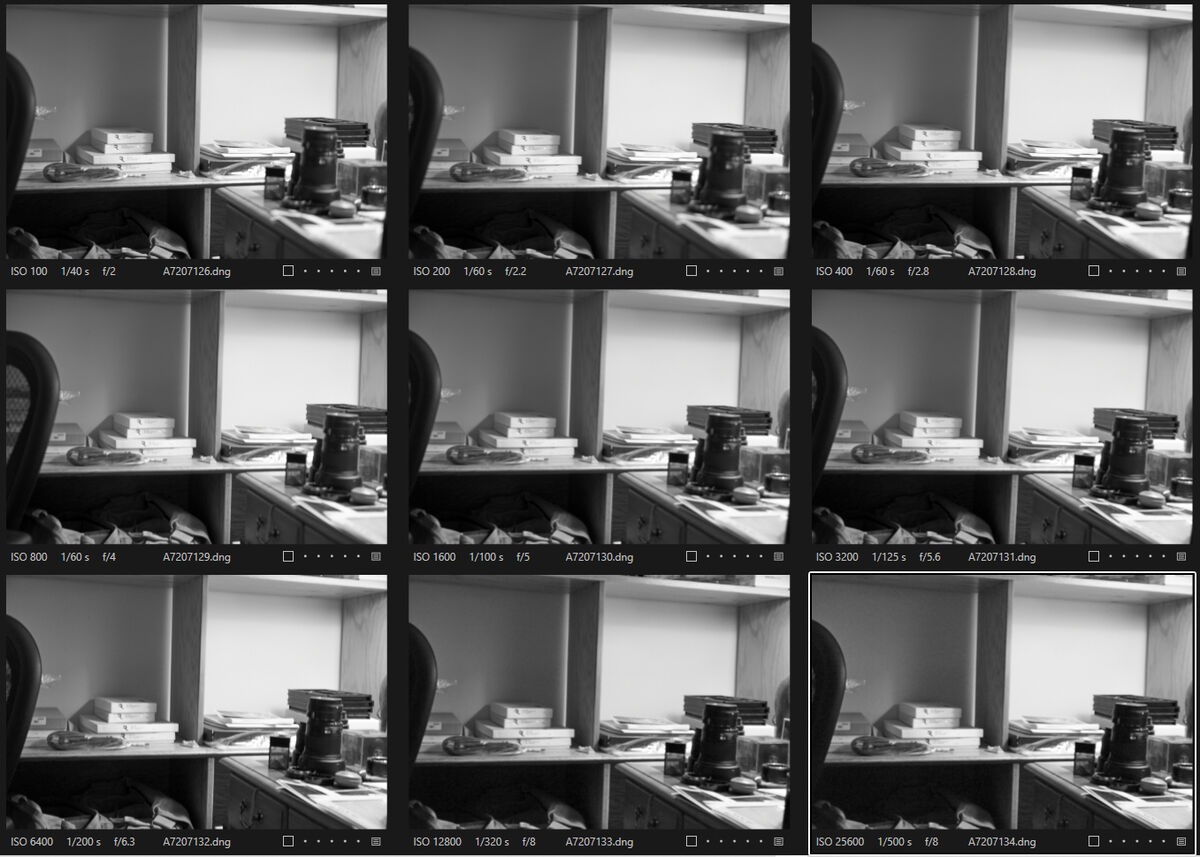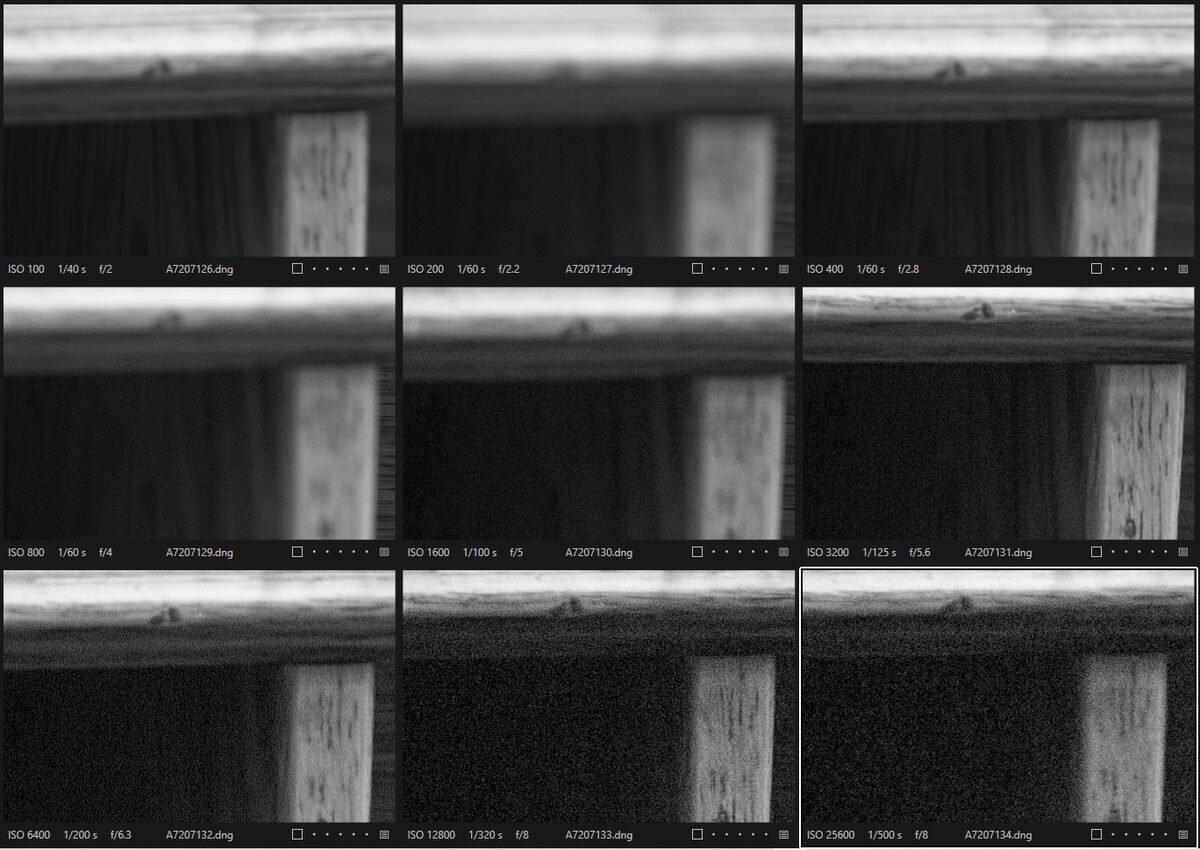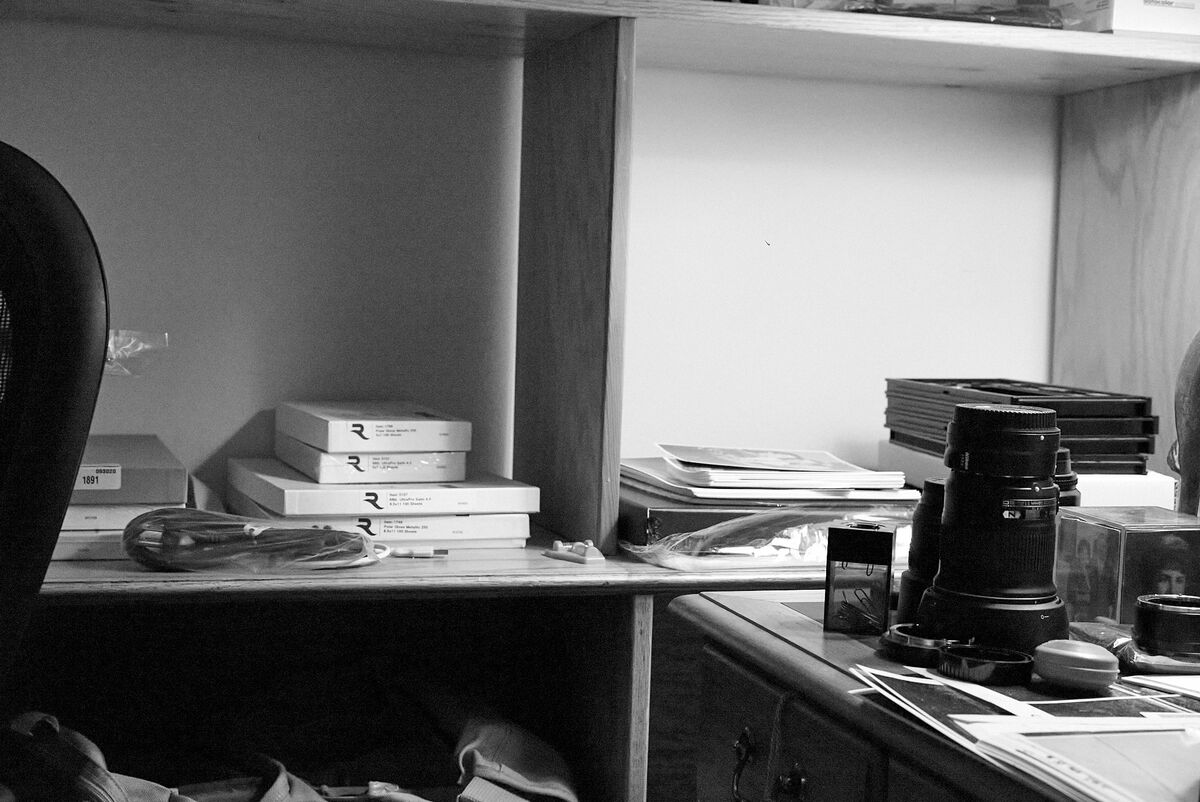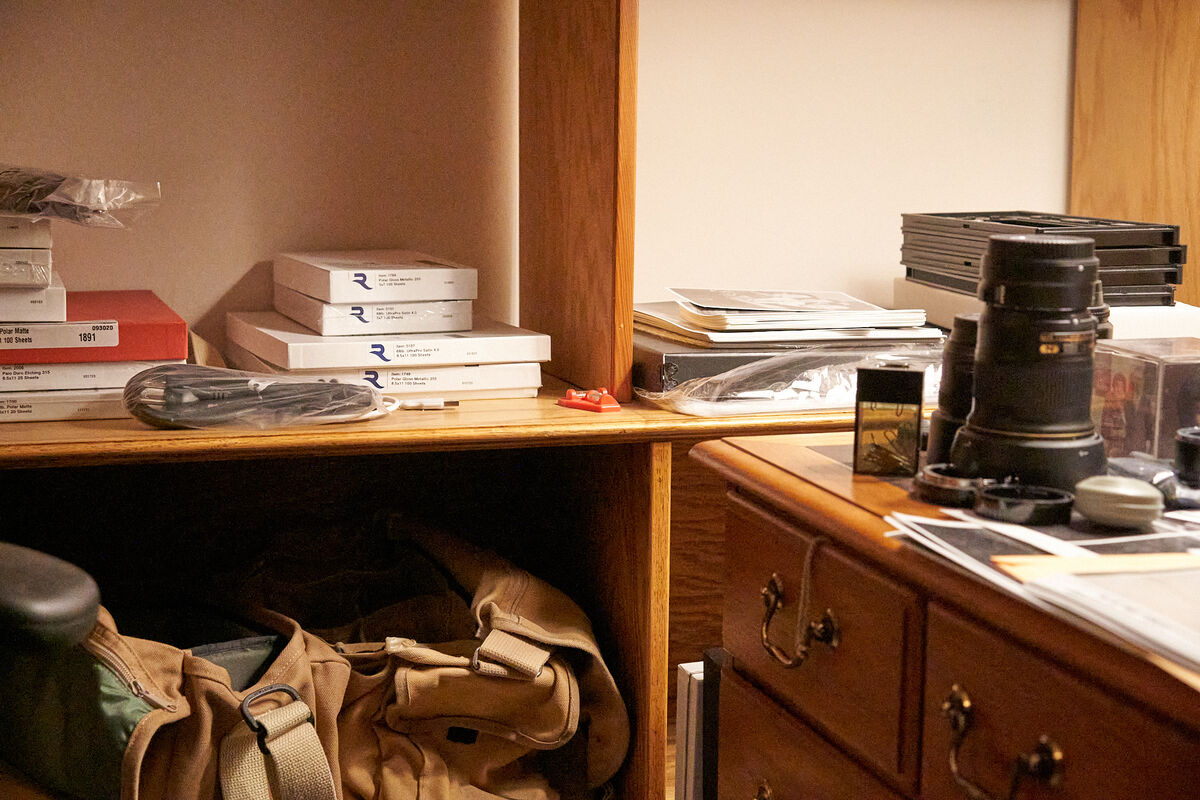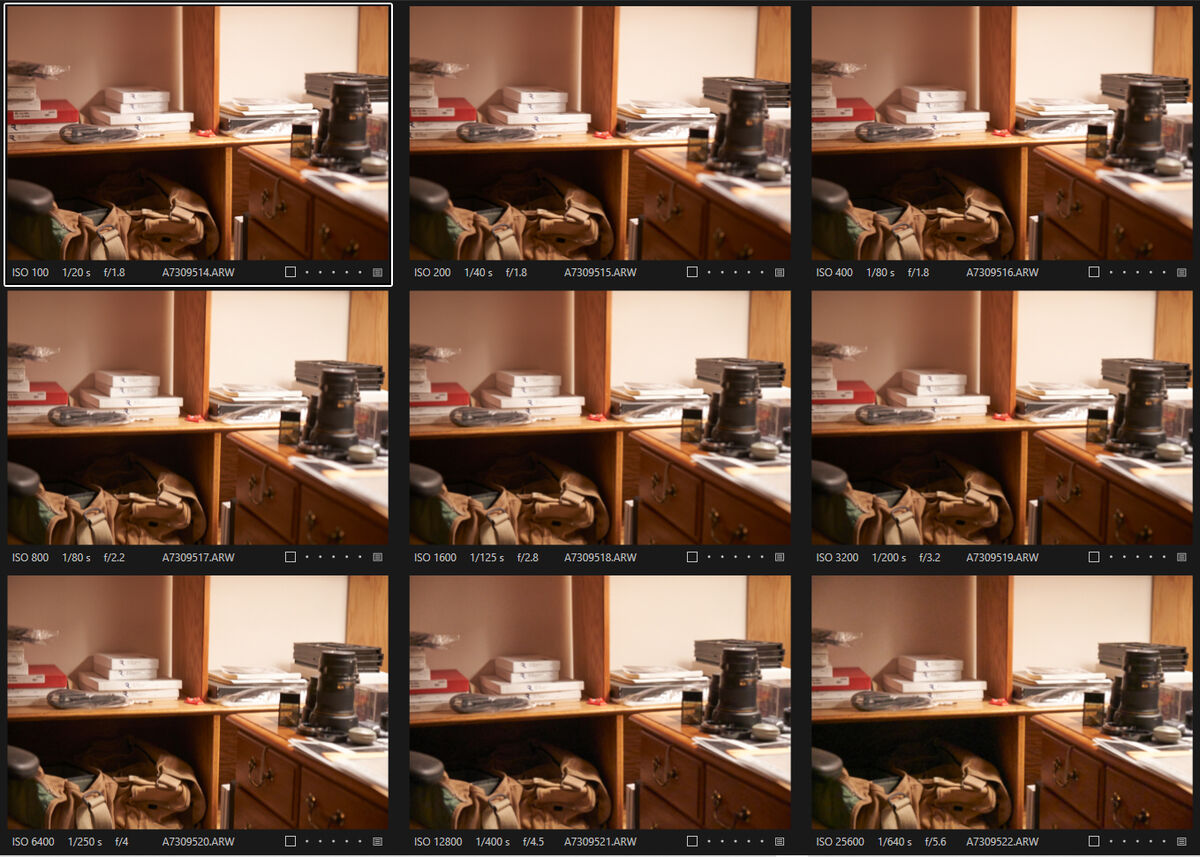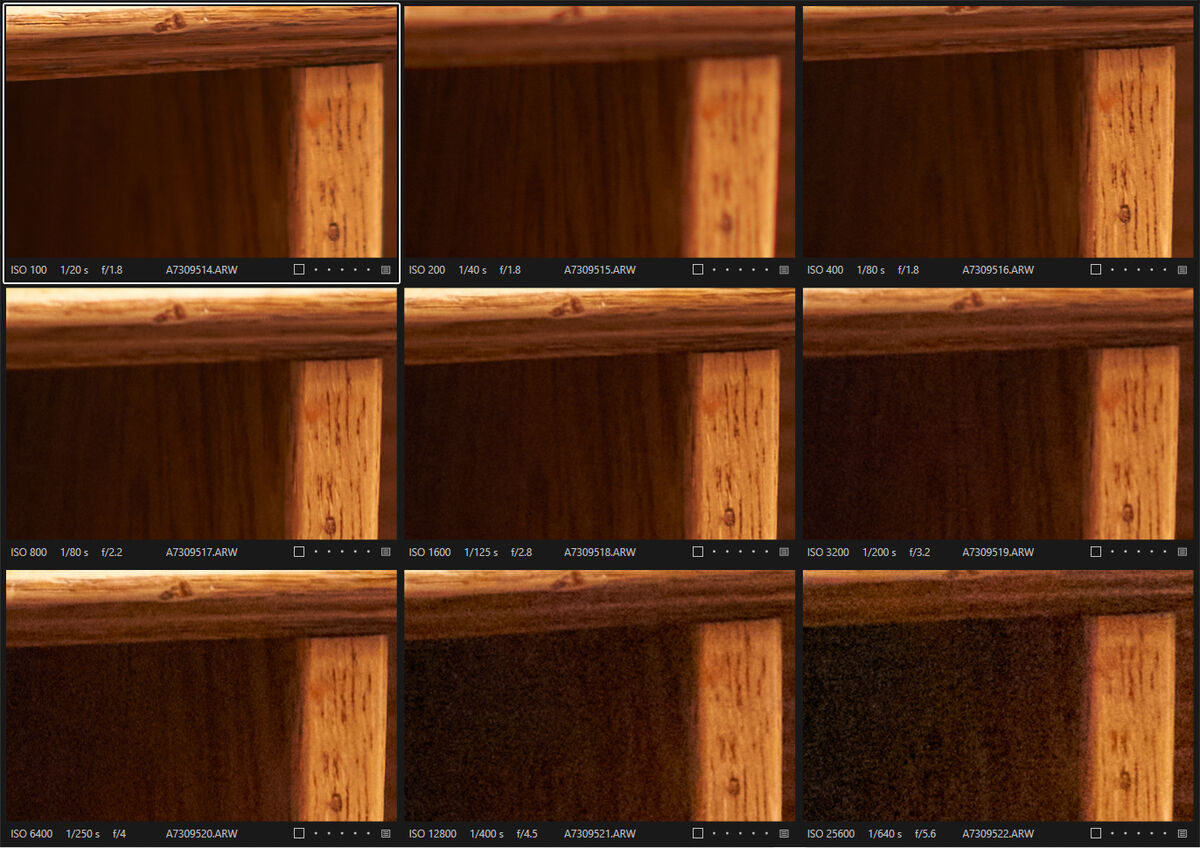How much noise can we tolerate?
Jan 18, 2024 16:03:31 #
I did a quick test with my A7 II (converted to monochrome) to try and find how much noise I would get at nine ISO settings from 100 to 25600. To save time, the camera was set to Program mode, matrix metering and all of the hand-held exposures ended up at a light value of either 7.0 or 7.3.
Then I opened the images in Capture One and clicked on AutoAdjust to apply all of the C1's default adjustments. By using a monochrome image there is no color noise
The images in the next post show the entire image and then a part of the scene blown up to 100%.
Then I opened the images in Capture One and clicked on AutoAdjust to apply all of the C1's default adjustments. By using a monochrome image there is no color noise
The images in the next post show the entire image and then a part of the scene blown up to 100%.
Jan 18, 2024 16:05:07 #
I made no effort to control the auto focus. The DOF at f/8 is clearly sharper than at f/2.
Jan 18, 2024 18:56:31 #
Jan 18, 2024 19:09:07 #
selmslie wrote:
I made no effort to control the auto focus. The DOF at f/8 is clearly sharper than at f/2.
When I had a D200 I took a few shots to see what I could deal with in terms of noise. My normal setting was ISO 200. When I got a D3 my normal setting went to 800. I kept that setting for the D4 and D5. My normal maximum was about 3200 for the D3 and 6400 for the D4/5. I could get useful images up to about 12K on the D3, 25K on the D4 and 50K on the D5 but there was some noise. I didn't have Topaz DeNoise in those days (~2008-2015).
My noise tolerance is fairly high because I don't do fine art photos. My photos were used online and in newsletters so they got a lot of size reduction by the time they were viewed. For family photos I put up with noise.
I would estimate (from memory) your noise at ISO > 1600 is similar to what I saw with the D4/5. It is there and visible at high ISO but it can be mitigated without too much loss of detail.
Jan 18, 2024 20:27:32 #
Jan 18, 2024 23:36:03 #
Jan 18, 2024 23:52:52 #
lukevaliant wrote:
looks like #6 is the winner
This is subjective, but we two agree at 3200.
As user of several *reasonably modern* FF cameras I can generalize that for 24MP 3200 is usually the sweet spot when needing speed.
Sweet spot does NOT mean usefull limit. For those same cameras, 5-digit ISOs will deliver winderful enjoyable displayable enlargeable images. Noise is plainly visible but not uglee, more like an intentional "texture effect" filter.
Cameras that I would not class as reasonably modern produced uglee noise, so avoiding their noise threshhold was a critical discipline.
Jan 19, 2024 06:49:50 #
lukevaliant wrote:
looks like #6 is the winner
User ID wrote:
This is subjective, but we two agree at 3200.
As user of several *reasonably modern* FF cameras I can generalize that for 24MP 3200 is usually the sweet spot when needing speed.
Sweet spot does NOT mean usefull limit. For those same cameras, 5-digit ISOs will deliver winderful enjoyable displayable enlargeable images. Noise is plainly visible but not uglee, more like an intentional "texture effect" filter.
As user of several *reasonably modern* FF cameras I can generalize that for 24MP 3200 is usually the sweet spot when needing speed.
Sweet spot does NOT mean usefull limit. For those same cameras, 5-digit ISOs will deliver winderful enjoyable displayable enlargeable images. Noise is plainly visible but not uglee, more like an intentional "texture effect" filter.
Looking at the 100% version I would also agree. But we are pixel peeping.
But that's why I included the full frame thumbnails you are looking at which seem fine, even at ISO 25600.
Here is a 2k version (probably as large as anyone would print such an image) of the ISO 25000 version including another one from the A7 III which includes color noise.
But cropping would lead to further magnification of the noise. Recovery of shadow detail would bring noise up from the shadows.
This all has to do with my current effort to narrow down the difference between the DR plots we can see at DXOMARK (which are hopelessly exaggerated) and the more reasonable information from Photons to Photos.
Jan 19, 2024 07:23:32 #
billnikon
Loc: Pennsylvania/Ohio/Florida/Maui/Oregon/Vermont
selmslie wrote:
I did a quick test with my A7 II (converted to mon... (show quote)
With Topaz Denoise I no longer have issues with noise.
Jan 19, 2024 07:44:38 #
selmslie wrote:
I did a quick test with my A7 II (converted to mon... (show quote)
Try the same test in daylight. Shooting high ISO in daylight (for higher speed e.g.) will usually produce quite acceptable noise levels (without additional NR), compared to indoor artificial light, due to higher signal level.
Jan 19, 2024 08:01:26 #
I’d get the focus fixed on your camera first. It’s throwing off the test in my view.
Jan 19, 2024 08:06:50 #
Jan 19, 2024 09:56:24 #
chrisg-optical wrote:
Try the same test in daylight. Shooting high ISO in daylight (for higher speed e.g.) will usually produce quite acceptable noise levels (without additional NR), compared to indoor artificial light, due to higher signal level.
I deliberate picked a subject with a wide DR to show what a high DR might do to the shadows.
DXOMARK shows about 7 stops of DR at ISO 25600 for a standard print (as opposed to pixel peeping at 100%) for the A7 II. At 24MP DXOMARK drops about 1 stop of DR when switching from print to screen.
Photons to Photos shows about 3½ stops but it doesn't address the magnification.
Daylight landscapes seldom exceed seven stops of DR in direct sunlight. I routinely use ISO 400 and have never needed noise reduction because there is little point in recovering deep shadows that would probably ruin the image.
The graph of the JPEG SOOC curves straight from the camera is typical of all cameras. It shows that manufacturers generally expect a scene to use a maximum of about 8½ stops of DR to produce a full range (0-255) JPEG when properly exposed.
ISO 100 shows that the DR for this scene is about 10 stops.
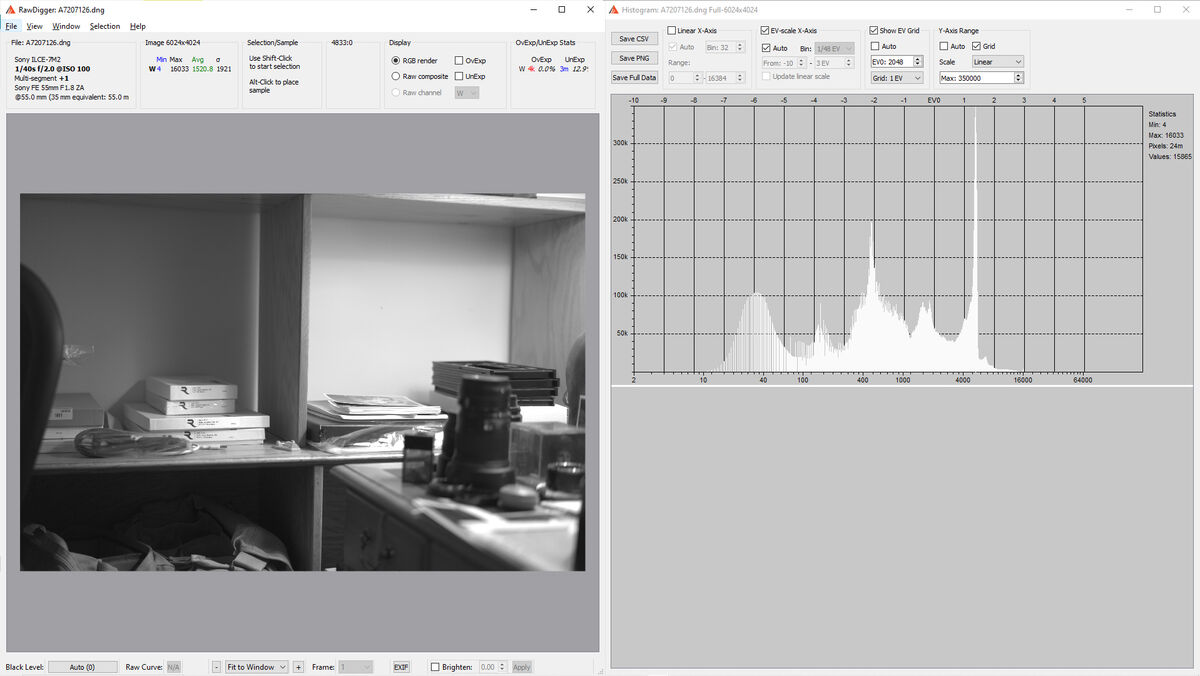
(Download)
Solid lines for the JPEG, dashed lines for the raw channels.
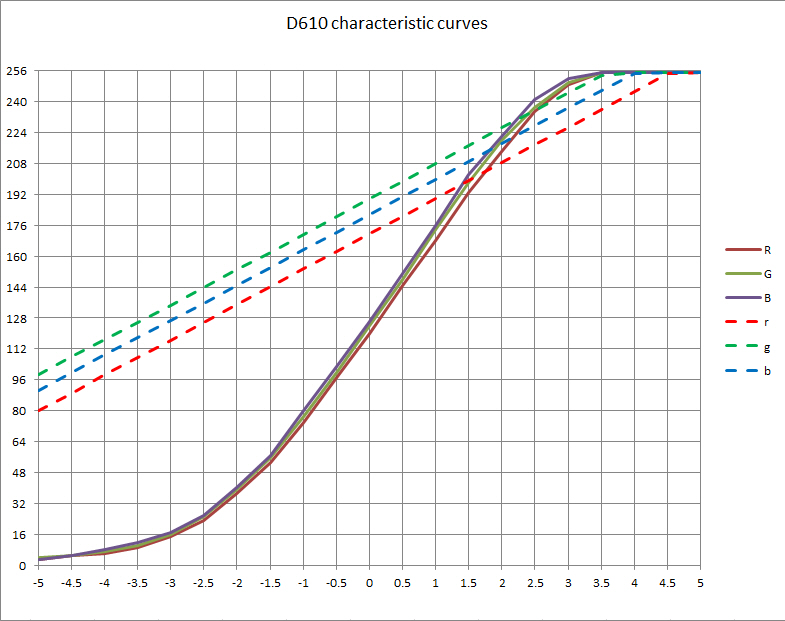
Jan 19, 2024 10:03:08 #
I hope you understand that noise is more noticeable in low light and when the sensor gets hot. High ISO does not necessarily mean noise because noise is the result of low light levels and underexposure.
Today we have excellent denoise softwares which are making noise much more manageable.
Today we have excellent denoise softwares which are making noise much more manageable.
Jan 19, 2024 10:11:57 #
Tomfl101 wrote:
I’d get the focus fixed on your camera first. It’s throwing off the test in my view.
It's not throwing off the test. In fact, sharper focus would distract our attention from the noise.
Here is the test for the A7 III. It's a better camera than the A7 II. I was a little more careful confirming the focus. At ISO 25600 Photons to Photos reports about a 1 stop improvement in DR at ISO 25600 over the full color version of the A7 II.
The modified A7 II makes up for that by not having a Bayer array that would have reduced the amount of light reaching the sensor by about one stop.
If you want to reply, then register here. Registration is free and your account is created instantly, so you can post right away.

